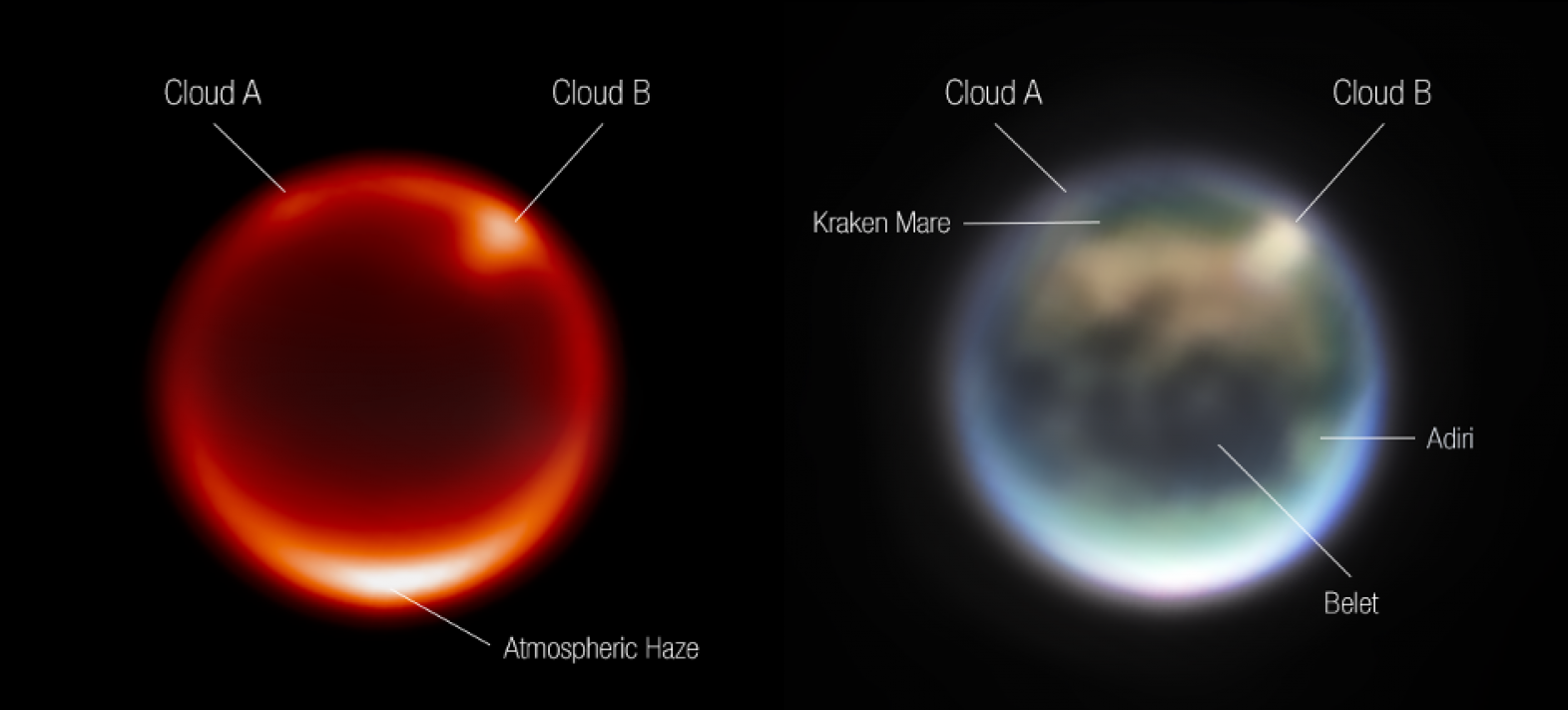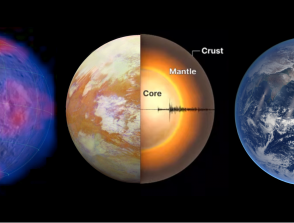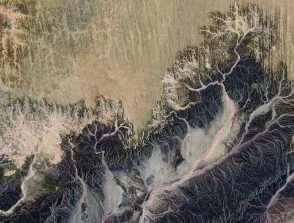James Webb Space Telescope (JWST) Guaranteed Time Observer cycle 1: Titan Climate, Composition and Clouds

Start: 01/07/2022 - End: 31/12/2023
International partnership outside Europe
Coordinators : Sébastien Rodriguez, Conor A. Nixon
Host institutions :
GSFC
Partner institutions :
JPL, JHUAPL, University of Maryland, Space Science Institue (USA), University of Bristol (UK), Instituto de Astrofisica de Andalucia (Spain), LESIA (France)
Related teams :
Planetology and Space Sciences
Related themes :
Earth System Science
We focus on the extremely broad capability of the combined JWST instrument suite to advance our understanding of Titan’s gases, hazes, condensates (clouds) and surface composition. NIRSpec’s high-resolution spectral imaging (R~2700) at near-IR wavelengths (0.6-5.0 micron) in IFU mode will yield information on all of these scientific areas. The spatial resolution and multiple filter capability of JWST NIRCam will reveal the distribution of haze and clouds in the atmosphere occurring during southern winter/northern summer. MIRI will be used to measure Titan’s stratosphere to attempt new gas detections, and to measure isotopic ratios with unprecedented sensitivity. We will obtain a full-range (4.9-28.8 micron), high resolution spectral-image with MIRI in MRS mode to measure temperatures, abundances of trace gases, isotopic ratios and haze signatures. This combined suite of observations in the 2022-2023 timeframe will follow directly after Cassini (end of mission in 2017) and expand on Cassini’s science return. These observations will provide a valuable input to dynamical models, and also serve as a baseline JWST measurement that may be repeated later in the mission as Titan’s south pole emerges into summer (Titan is known to be highly variable with season).





